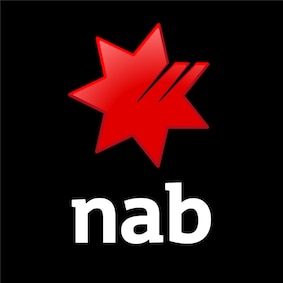Bookkeeping options for small business - NAB
What is bookkeeping?
With advancements in technology, there are now many ways to manage your bookkeeping – from manual to an integrated service with your bank account.
Different methods of bookkeeping
There are many different ways to approach bookkeeping. You can opt for traditional manual methods, or use some of the newer electronic options available.
Manual bookkeeping
The most basic system is also the cheapest – all you need is a ledger from a newsagent or stationer and a pen to write down your income and expenses. If you’re a sole trader or small business with very straightforward accounts this may be all you need.
Electronic bookkeeping
As the ATO moves to an all-electronic records system it makes sense to take advantage of the benefits as soon as you can. Once you’ve made the change, you’ll find record keeping is much faster and easier, and you’ll also save on physical storage space at home or in the office.
Electronic bookkeeping falls into three categories – spreadsheets, accounting software and web-based systems.
Spreadsheet accounting
If you’re starting out and doing your best to keep expenses to a minimum, a simple Microsoft Excel spreadsheet is a low-cost alternative. Spreadsheets can work well for small business and sole trader bookkeeping.
Accounting software
Off-the-shelf or tailored software accounting packages automate processes such as calculating GST, updating your ledgers and generating invoices. They can also simplify your payroll, BAS and tax returns. You can ask your accountant to recommend a brand that complies with Standard Business Reporting (SBR).
Web-based bookkeeping
A web-based or cloud system stores your financial records securely off-site and often costs less than traditional accounting software. You can integrate your NAB account with platforms like Xero, Reckon, MYOB or QuickBooks to reconcile accounts, track expenses, view balances, send invoices and approve payments. It works from any device, whether you’re on the road, at the office or working from home.
AI bookkeeping
AI tools for bookkeeping are quickly becoming popular for small businesses in many industries around Australia. They can help with automating repetitive tasks, categorising transactions and financial forecasting and compliance checks. It’s all about saving time and reducing admin burden.
Learn more in our guide to AI bookkeeping and discover how you can streamline your business operations.
How to do bookkeeping
Bookkeeping is the foundation of sound financial management for any small business. A well-structured process ensures accuracy, compliance and clarity in financial decision-making.
Here's an overview of the key steps involved:
1. Setting up a chart of accounts
The chart of accounts is a structured list of all the financial accounts used by a business. It categorises transactions into five main types:
- Assets – what the business owns (e.g., cash, inventory, equipment).
- Liabilities – what the business owes (e.g., loans, accounts payable).
- Equity – owner’s interest in the business.
- Income – money earned from sales or services.
- Expenses – costs incurred to operate the business.
Why it matters: A well-organised chart of accounts makes it easier to track financial activity, generate reports and ensure consistency in record-keeping.
2. Recording transactions
Every financial activity, whether it's a sale, purchase, loan repayment or salary payment, must be recorded accurately. This includes:
- Income from customers.
- Expenses such as rent, utilities and supplies.
- Asset purchases like equipment.
- Liability payments such as loan instalments.
- Equity changes like owner contributions or withdrawals.
Use accounting software or ledgers to record these transactions promptly and correctly.
3. Reconciling bank statements
Regular reconciliation ensures that your recorded transactions match your bank statements. This helps identify errors, omissions or fraudulent activity early. It’s typically done monthly and involves:
- Comparing bank statement entries with your records.
- Investigating discrepancies.
- Adjusting entries as needed.
4. Generating financial reports
Financial reports provide insights into your business’s performance and financial health. Key reports include:
- Profit and loss statement (income statement) – shows revenue, expenses, and profit over a period.
- Balance sheet – summarises assets, liabilities, and equity at a specific point in time.
- Cash flow statement – tracks the movement of cash in and out of the business.
These reports are essential for decision-making, tax reporting and securing funding.
Not confident about doing your own bookkeeping?
If the prospect of doing your own business bookkeeping fills you with dread or you’re not confident about doing it yourself, an online course in bookkeeping basics might help. When you see how everything falls into place you could feel more positive and confident.
Alternatively, you could decide to delegate the task to a professional bookkeeper. The time and stress you save by handing over your record keeping might make financial sense. New cloud and fixed-fee options can also keep costs relatively low and easy to factor into your budget.
Whatever you do, don’t make the biggest mistake of all – forgetting that accurate bookkeeping is the key to business success.
Common bookkeeping mistakes to avoid
Even with the best intentions, small business owners can fall into common bookkeeping traps that lead to inaccurate records, missed deadlines and financial stress. Here are some frequent mistakes and how to avoid them:
1. Mixing personal and business finances
The mistake: Sole traders aren’t required to open a business transaction account. However, if your annual turnover is more than $75,000, you’re obligated to register for GST and have an ABN. It can be helpful for future preparation to have a separate business transaction account from the start.
Why it matters: It can complicate record-keeping, makes tax time harder and may raise red flags with the ATO. Keeping your personal and business finances separate may also make your life easier as your business continues to scale.
How to avoid it: Consider opening a dedicated business bank account and use it exclusively for business transactions.
2. Not reconciling bank statements regularly
The mistake: Skipping monthly reconciliations between your books and your bank statements.
Why it matters: Unreconciled accounts can hide errors, missed payments or even fraud.
How to avoid it: Set a monthly reminder to reconcile your accounts and investigate any discrepancies promptly.
3. Failing to track expenses properly
The mistake: Losing receipts, forgetting to record small purchases or misclassifying expenses.
Why it matters: Poor expense tracking can lead to inaccurate financial reports and missed tax deductions.
How to avoid it: Use accounting software or apps to capture receipts and categorise expenses in real time.
4. Ignoring tax deadlines
The mistake: Missing BAS lodgement dates, superannuation payments or income tax deadlines.
Why it matters: Late submissions can result in penalties, interest charges and cash flow issues.
How to avoid it: Keep a tax calendar and consider working with a registered BAS or tax agent to stay compliant.
5. Not backing up data
The mistake: Relying solely on local files or a single device for your financial records.
Why it matters: Data loss due to hardware failure, theft or cyberattacks can be devastating.
How to avoid it: Consider using cloud-based accounting software or regularly back up your data to a secure location.
Related products and services
NAB Business Everyday Account ($0 monthly fee)
Only pay for what you need, with this transaction account with no monthly account fee.
Business transaction accounts
Whether your business is getting started or growing, we've got the right transaction account for you.
Accounting package integration
Link your NAB account to accounting software to make bank reconciliation much easier.
Resources to help you manage your business
Understanding and managing your cash flow
Learn how to understand your cash cycles and set cash goals.
Using our business financial health check tool
Identifying potential issues and determining how to fix them.
How to reduce costs and improve profitability
We share the best way to do it and some quick cost-cutting ideas.
Get in touch
Request a call back
Let us help with your business banking needs. Request a call back to chat with one of our business bankers.
Contact us
Explore our business banking contact information and get support with a wide range of products, services and topics.
Visit a NAB branch
Our business bankers are located all around Australia.
Important information
Apologies but the Important Information section you are trying to view is not displaying properly at the moment. Please refresh the page or try again later.
The information contained in this article is intended to be of a general nature only. It has been prepared without taking into account any person’s objectives, financial situation or needs. Before acting on this information, NAB recommends that you consider whether it is appropriate for your circumstances. NAB recommends that you seek independent legal, financial and taxation advice before acting on any information in this article.





